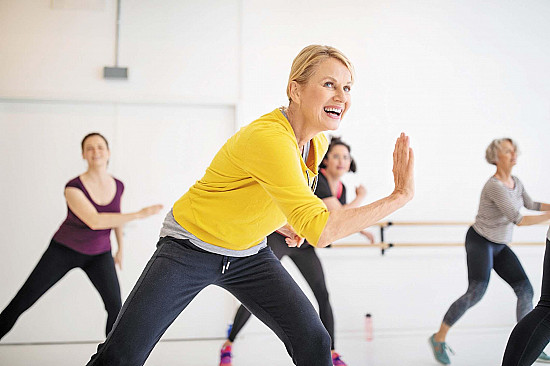
What’s in trend? The question doesn’t merely relate to vogue. Actually, even prepare varieties go in and out of vogue, echoing tendencies fueled by social media and completely different cultural drivers.
Working instance: high-intensity bursts of prepare have grabbed headlines over the last few years, with scientists producing an array of analysis inspecting the nicely being benefits of fast spurts of movement lasting from one to a couple minutes. Which can embody leaping jacks, lunges, working in place, leaping rope, air boxing, working up stairs, or another high-intensity train.
Within the meantime, a great deal of evaluation continues to take care of the nicely being advantages of moderate-intensity, regular movement. Mainstay selections for these courses embody brisk strolling, biking, jogging, and elliptical and treadmill use.
Given the swings in recognition between the in one other means paced choices, perhaps in all probability essentially the most pressing question is which one is finest for us. It’d sound certain prepare patterns may present superior to others, nevertheless we should all the time resist the temptation to think about that, says Dr. Meagan Wasfy, a sports activities actions coronary heart specialist at Harvard-affiliated Massachusetts Regular Hospital.
“There are on a regular basis tendencies, and every claims to be the latest and best method to switch your physique,” Dr. Wasfy says.
Breaking down the data
What nicely being benefits does each technique provide? A sampling of newest analysis and official nicely being guidance weighs in.
Proof supporting prepare bursts consists of the following:
- A 2022 analysis of data collected on better than 25,200 people who didn’t in every other case prepare (frequent age 62, 56% ladies) revealed in Nature Remedy found that people who routinely did transient bursts of vigorous train — outlined as three bouts, each lasting a minute or two — had significantly lower odds of dying or creating coronary heart issues over the following seven years than members who didn’t.
- A 2023 analysis in JAMA Oncology of better than 22,000 people who didn’t prepare (frequent age 62, 55% ladies) instructed that even fast, intermittent durations of intense movement — a minute at a time, three or 4 events a day — was linked with 18% lower most cancers menace over the following 6.7 years, significantly for cancers of the breast, uterus, or colon.
Proof supporting longer, moderate-intensity prepare consists of the following:
- Adults who do any amount of moderate-to-vigorous prepare derive nicely being benefits, along with reducing their risks of coronary heart issues, diabetes, and some sorts of most cancers, in response to the CDC.
- A 2022 analysis in JAMA Inside Remedy involving 78,000 people (frequent age 61, 55% ladies) found their menace of coronary coronary heart sickness, most cancers, and premature dying dropped by 10% over the following seven years for every 2,000 steps they logged day by day, with the revenue peaking at 10,000 steps.
Sense a theme from the findings? Irrespective of depth, it’s apparent that any movement is sweet in your nicely being.
“No one comes out ahead just about the long-term outcomes,” Dr. Wasfy says. “What points most is shifting your physique and doing additional of it. The sum of movement, over the course of a 12 months or a very long time of your life, is what points.”
Practice caveats
One clear profit to coach bursts — or its cousin, high-intensity interval teaching (HIIT) — is that any high-intensity train permits you to fulfill advisable prepare ideas in a lot much less time. Properly being organizations advise adults to get on the very least 150 minutes of affordable prepare or 75 minutes of vigorous prepare (or some equal combination of the two) per week. For an HIIT train, you alternate vigorous, fast sprints with transient durations of rest or lower-intensity movement.
“It’s a time-efficient method to get your advisable prepare dose in a lot much less time,” Dr. Wasfy says.
Extreme-intensity prepare does pose only a few drawbacks, however. These embody a better menace of accidents and irritation to joints and muscle teams. Furthermore, for people with coronary coronary heart sickness or its menace parts, sudden bursts of prepare may presumably be additional extra prone to ship on new cardiac indicators.
“For individuals who’re writing an prepare prescription not understanding one thing about someone’s nicely being historic previous, you’d write it for moderate-intensity, regular prepare,” Dr. Wasfy says.
If you need to increase your prepare depth nevertheless have present coronary coronary heart sickness — or indicators equal to chest ache with vigorous movement — converse to your doctor upfront. Older adults who’ve seen their functionality to coach has declined additionally must converse up.
Ultimately, Dr. Wasfy says, it is best to pick a technique of prepare you really like — and may do persistently — and disrespect well being tendencies. “For individuals who’re healthful,” she says, “it’s really your choice.”
Image: © Luis Alvarez/Getty Images
